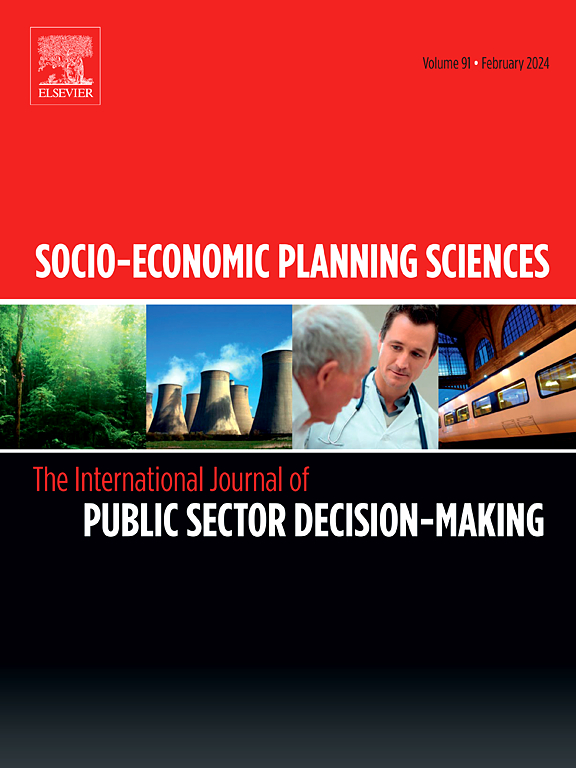建立按空间分类的可卡因供应链模型
IF 6.2
2区 经济学
Q1 ECONOMICS
引用次数: 0
摘要
尽管可卡因贩运的范围和经济规模遍及全球,但我们对全球贸易的最佳地理了解仍然很粗略。要为安全政策提供信息,并预测与可卡因贸易相关的社会和环境危害的蔓延和强度,就必须对可卡因供应链如何嵌入多个地点有更多的空间分类了解。在这项研究中,用于合法供应链的建模方法被用于对非法供应链流进行空间分类。对利润和供应最大化模型版本进行了比较,以阐明可卡因贩运者可能面临的关键决策参数。根据中美洲主要港口的走私能力和最常与可卡因货物一起缉获的某些商品的双边贸易量,估算了流向欧盟+3(挪威、土耳其和英国)市场的可卡因量。由此估算出的从中美洲流入欧盟+3 国家的可卡因数量在 938 至 1526 公吨之间。一般来说,中美洲更容易隐藏和储存,导致供应给美国的数量减少,而供应给欧盟+3 市场的数量增加。重要的是,这种建模方法的价值并不在于所得出的定量估计值,而在于其方法论,它能够根据现有的最佳数据对任何秘密现象的定量估计值进行严格的基础分析。本文章由计算机程序翻译,如有差异,请以英文原文为准。
Towards spatially disaggregated cocaine supply chain modeling
Despite the global reach and economic scale of cocaine trafficking, our best geographic understanding of the global trade remains coarse. A more spatially disaggregated understanding of how the cocaine supply chain embeds across multiple locations is necessary for informing security policies and anticipating the spread and intensity of social and environmental harms associated with the cocaine trade. In this research, modeling methods used for legal supply chains are adapted to spatially disaggregate illicit supply chain flows. Profit and supply maximization model versions were compared to elucidate key decision parameters cocaine traffickers might be facing. Cocaine flows to EU+3 (Norway, Turkey, and United Kingdom) markets were estimated based on the smuggling capacity of major Central American ports and bilateral trade volumes of selected commodities most often seized with cocaine shipments. The resulting estimates of cocaine volumes diverted to EU+3 countries from Central America ranged between 938 and 1526 metric tons (MT). Generally, easier concealment and storage in Central America led to less volume supplied to the United States (US) and increased shipments to EU+3 markets. Importantly, the value of this modeling approach is not in the quantitative estimates produced, but in the methodological approach that provides the ability to rigorously ground any quantitative estimates of clandestine phenomenon in the best available data.
求助全文
通过发布文献求助,成功后即可免费获取论文全文。
去求助
来源期刊

Socio-economic Planning Sciences
OPERATIONS RESEARCH & MANAGEMENT SCIENCE-
CiteScore
9.40
自引率
13.10%
发文量
294
审稿时长
58 days
期刊介绍:
Studies directed toward the more effective utilization of existing resources, e.g. mathematical programming models of health care delivery systems with relevance to more effective program design; systems analysis of fire outbreaks and its relevance to the location of fire stations; statistical analysis of the efficiency of a developing country economy or industry.
Studies relating to the interaction of various segments of society and technology, e.g. the effects of government health policies on the utilization and design of hospital facilities; the relationship between housing density and the demands on public transportation or other service facilities: patterns and implications of urban development and air or water pollution.
Studies devoted to the anticipations of and response to future needs for social, health and other human services, e.g. the relationship between industrial growth and the development of educational resources in affected areas; investigation of future demands for material and child health resources in a developing country; design of effective recycling in an urban setting.
 求助内容:
求助内容: 应助结果提醒方式:
应助结果提醒方式:


